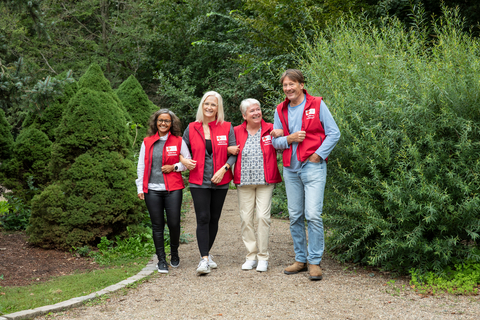
Why? The rationale
Calls for cross-sector partnership align with Sustainable Development Goal 17: ‘Strengthen the means of implementation and revitalize the global partnership for sustainable development.’ Different sectors have complementary strengths; for example, the private sector is in a position to help to bridge the financing gap and industry’s experience of addressing NCDs outside humanitarian settings can also be leveraged. However, there remain concerns about conflicts of interest, particularly with the pharmaceutical industry. Two cases need to be made: first to the private sector to encourage its involvement in NCDs and secondly to other sectors that partnership can be of benefit. Transparency, accountability and honest discussions are essential, with a commitment by the private sector to engage in sustainable initiatives rather than short-term pilots.
An important barrier to partnerships is the absence of a clear set of guidelines or priorities around which to coalesce. WHO has already developed a set of ‘best buys’ for NCDs – so the development of a set of ‘best buys’ specifically for NCDs in humanitarian settings would indicate to potential partners that there is a costeffective business case for action. The best buys would ensure a more coordinated approach, responding to actual need rather than to the ideas of individual partners.
Discussion
Developing new best buys will not be easy, particularly given the paucity of evidence around NCDs in humanitarian settings – but developing a tailored set of existing best buys would be ‘really something’ and ‘realistic and possible!’ (Bente Mikkelsen, WHO).
Partnership will be essential, including involving civil society as an integral part of the solution, as well as driving advocacy. But there will be a challenge around the lack of a common language between the NCD actors and the humanitarian, donor and private sectors. Misunderstandings could extend to the term ‘best buys’. An alternative form of words – such as ‘priority cost-effective interventions’ – might be more appealing. Positive engagement with the private sector is a matter of ‘knowing who to speak to and where to push’ (Lene Aggernæs, MFA) – for example, engaging with individual CEOs of relevant companies.
Another way to leverage consistent funding would be the creation of a ‘global fund’ to pool finances and resources to address NCDs in humanitarian settings. The Grand Bargain, a platform for humanitarian funding, bringing together more than 30 of the world’s biggest donors and aid providers, could also be an important stakeholder. NCDs should be included in every health-related response in humanitarian settings, making existing funding go further and catalysing new partnerships. Integrated care takes advantage of synergies between different initiatives – for example, if a funder is interested in maternal health, diabetes checks could be included in the package of care – and is therefore more sustainable.
“Involvement of the private sector is essential - but it is difficult”
How? Campaign ideas
A powerful campaign video was produced at the Bootcamp targeting WHO and very specifically the former mayor of New York Michael Bloomberg, the WHO global ambassador in NCDs acknowledging that he is also an important donor.
In this short video, a health worker from Syria address the WHO ambassador directly expressing deep frustration and upset by lived experience of people in humanitarian crises dying of preventable NCDs complications and giving facts and figures to the problem.
It urges him to mobilise resources and acknowledges the need to use financial and human resources in the most fiscally responsible way leveraging all partners – public and private sectors, academia, NGOs and local communities themselves.
Finally, the video encourages the involvement of a specific stakeholder who is well placed to initiate the best-buy process by undertaking an analysis of cost-effectiveness of what works in humanitarian settings.
The main campaign message highlights that to ignore NCDs in humanitarian settings is to compound the difficulties facing some of the world’s most vulnerable populations: ‘Invest in NCDs: leave no one behind!’